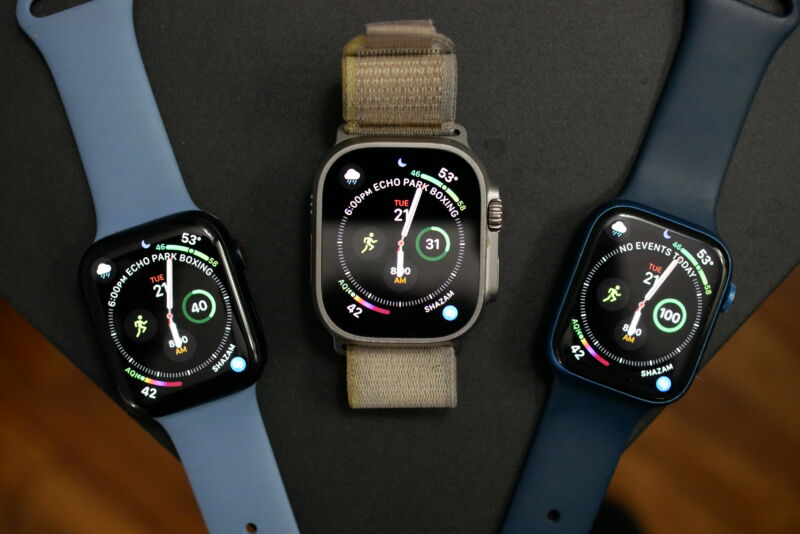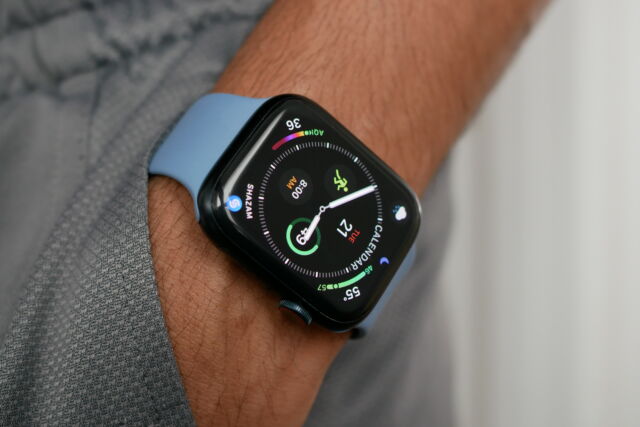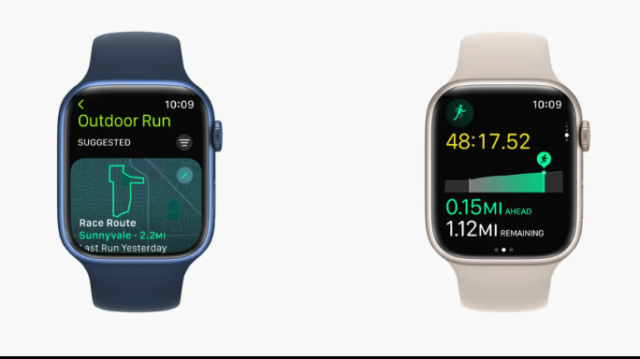
If you’re an iPhone user who wants a smartwatch, the Apple Watch should be at the top of your list. Unless you’re a serious athlete who needs more robust tracking, the Apple Watch can satisfy most moderate exercisers' needs with a growing list of health and fitness tracking features and improvements. It's also a great companion for controlling smart home devices, contactless payments with Apple Pay, and a wealth of third-party app integrations. And, of course, it can receive all your iPhone notifications.
Apple currently offers three models in stores: the Series 8, the second-gen SE, and the new Apple Watch Ultra. Among those, there are multiple variants that differ in size, connectivity, design, and price. Then there are older-but-still-updated generations you can dig up from third-party retailers like Best Buy and Amazon, as well as options to buy refurbished devices. Suffice it to say, there's a lot to choose from.
Apple is expected to launch new models in the fall, but for those wanting to take the plunge today, we’ve sifted through the market of old, new, and refurbished Apple Watches and tested the current options to help determine the best one for you. If you'd like to upgrade from an older model or hop aboard for the first time, allow us to do your research for you.
The best Apple Watch for most people

Apple Watch Series 8
Buy: From $329 at Amazon, Apple, Target
The Apple Watch Series 8 is the best smartwatch you can buy right now. It’s the most well-equipped, well-supported wearable on the market, making it the truest extension of your phone available. The number of apps and integrations is unparalleled, allowing you to do everything from opening your garage door to checking the ocean tides right from your wrist. It’s not the most decked-out fitness accessory—we recommend a Garmin smartwatch for serious athletes, but the Series 8 is closing some ground here, too.
The Series 8 introduced features that improve battery life, period and workout tracking, and safety. It also does all of this at half the price of the more ruggedized and robust Apple Watch Ultra, which is meant for outdoors enthusiasts. It hits the top-tier trifecta with health sensors for ECG monitoring, blood-oxygen readings, and heart rate and adds a temperature sensor for better period tracking. Throw in GPS, a compass, an always-on altimeter, built-in fall detection, 50-meter water resistance, and the option for cellular capability, and you have a fitness companion you can bring with you anywhere for both tracking and safety purposes.
The Series 8 also has a more sensitive G-force accelerometer that’s capable of detecting up to 256 Gs of force—eight times more than the Series 7 and the highest range on any smartwatch, Apple says. That’s for a new feature called Crash Detection, which enables your Series 8 to alert emergency services when it detects a severe car crash.
Many new features came to the Series 8 through Apple’s latest wearable OS, watchOS 9. Therefore, the following features aren’t exclusive to the Series 8, but some may work better due to hardware differences.
Backtrack is a new feature in the revamped Compass app that helps you retrace your steps if you get lost. It’s rudimentary in its implementation, but it still allows you to drop waypoints, customize them with icons, and point you in the general direction of the path you just traveled. It’s better than nothing when you’re in a jam, but Apple certainly has room to improve.
Low-power mode can effectively extend your battery life to 36 hours (about two days of usage) versus the 18-hour limit (one day) all Apple Watches have, and fast charging are among the top power features of the latest model. The Series 8 (and second-gen SE and Ultra) can also take less frequent GPS and heart rate readings during a workout. Otherwise, the low power mode works the same as on any other watchOS 9-compatible Watch, disabling the always-on display, blood oxygen and heart rate sensors, and limiting notifications.
The Series 8 charged from 0 to 100 percent in just over an hour in our testing. That’s about half the time it takes to charge any other Apple Watch model older than the Series 7.

The Series 8 enjoys all the new features of watchOS 9 that compatible Apple Watches do. That includes Afib history (only for diagnosed individuals), sleep stages, customizable workout screens, heart rate zones, the ability to run against your previously logged running route times, and more in-depth running dynamics. That includes running cadence, vertical oscillation, stride length, ground contact time, and power (in watts).
Apple could stand to do some work on contextualizing what all these metrics mean for the user, but if you already have an idea or are willing to do some research, this data can be helpful. Apple’s running dynamics are impressive for what the Watch tracks, especially without the aid of a secondary device, as is needed with competitor devices.Even if you’re a non-fitness user, the Apple Watch can still open your garage door, unlock your phone or Mac computer, use Apple Pay, control music, and, of course, deliver timely notifications so you won’t have to keep taking your phone out of your pocket.
And yes, Apple Watches are still iPhone-only, and that will likely never change. But taken as a whole, and especially for iPhone owners, the Apple Watch is the most well-rounded wearable platform on the market—and right now, the Series 8 is the most complete offering for most people. Plus, if style is a concern, you can opt for different colors or a stainless steel case rather than aluminum, or you can swap in one of the many replacement band styles (including those from Hermès) from a seemingly endless market of them.
Who’s it for: Those who want the latest in health and fitness features
Worth the upgrade for: Series 5 and below
Comments
Post a Comment